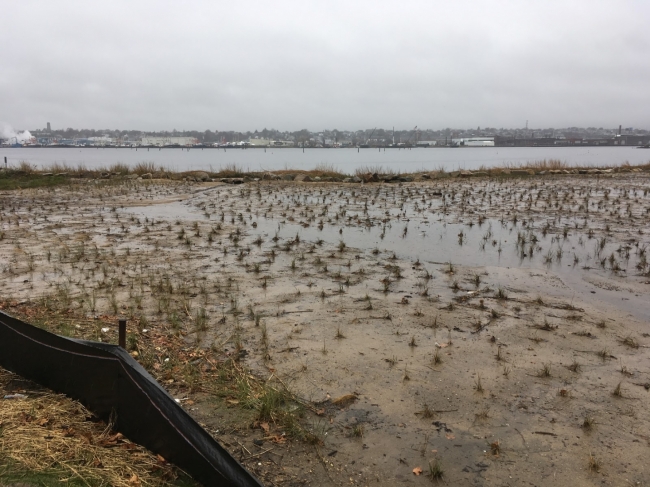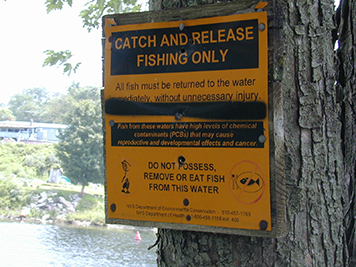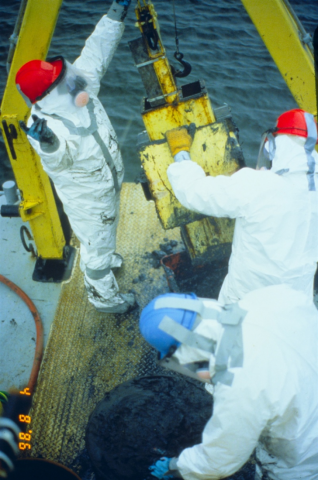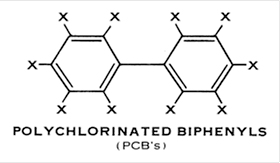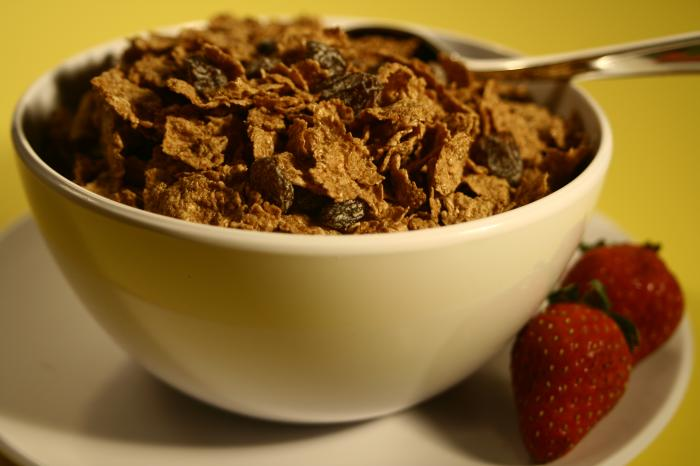Measuring the sediment concentration of toxic polychlorinated biphenyls (PCBs) at hazardous waste sites, and its impact on aquatic life, is an important way for scientists to determine how much damage pollution has caused to the environment.
These data are critical to analyze injury to biota, make decisions about cleanup, and hold polluters accountable through Natural Resource Damage Assessments. Unfortunately, translating a sediment concentration into an injury to marine life is a difficult task and is often open to different interpretations by different scientists.
This is a challenge that I’ve contended with over my 20-plus-year career with NOAA, working to assess the impacts of hazardous waste pollution and oil spills across the Northeast. However, with each scientific challenge comes opportunity.
My new publication, titled “Acute PCB Benthic Invertebrate Toxicity Testing to Support the 2017 Chronic Dose-Response Sediment Injury Model” should help to provide a more rigorous, science-based evaluation of the relationship between sediment contamination concentrations and its impact on marine life.
The Need for A Standard Approach
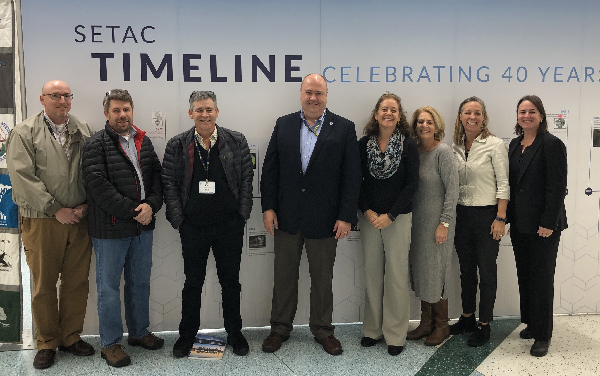
For many years scientists have debated the sediment concentration that can cause toxicity to the benthic community, the invertebrates that make their home burrowing in or sitting on top of bottom sediments. Two different scientists can have different interpretations of environmental injury looking at the same data from the same hazardous waste site.
This is a persistent issue in ecology, or as my former professor put it “It’s the ecology, stupid!” To attempt to address this challenge, my partners and I devised a science-based method to develop an approach to predicting benthic toxicity from sediment concentrations that all can agree with.
To understand this numerical process, you first need to understand how PCBs behave in the marine environment.
How PCBs Behave in Sediment
On a chemical level PCBs are hydrophobic, they don’t like water. When discharged to a waterway, PCBs prefer to adhere to grains of sediment, and bits of dead plants and animals, and sink to the bottom. They tend not to re-mix with water flowing between grains of sediment. This means that the water found between grains of sediment will have a lower PCB concentration than the grains of sediment surrounding it.
If you compare contaminated sediment to a bowl of cereal, sediment grains are the cereal and this “interstitial water” is the milk. The cereal may be contaminated, but the milk has a lower concentration of chemicals. However, the contaminants in the “milk” are more bioavailable to fish and invertebrates and therefore critical to understanding and predicting impacts to marine life.
A Reference Manual for Toxic Injury
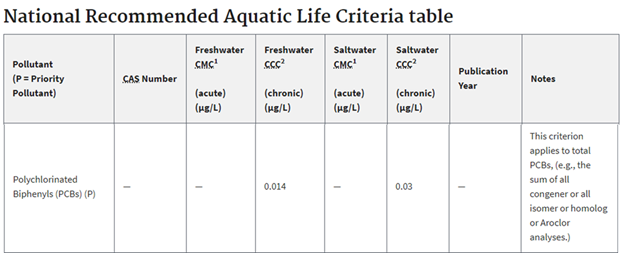
In the 1990s the U.S. Environmental Protection Agency developed the National Recommended Water Quality Criteria - Aquatic Life Criteria Table, providing water concentrations at which benthic organisms are killed or hurt by PCBs and other contaminants.
This helps scientists infer if benthic organisms were killed or injured at a given pollution site. This “reference book” is designed for water quality, but there are two methods to make it work for contaminated sediments. Each of these have advantages and limitations. They are:
- Examining large sets of sediment chemistry and toxicity data to look for trends (empirical method).
- Theoretical Equilibrium Partitioning (EqP) method.
The first method was originally developed by NOAA (Long and Morgan, 1989) and has been built upon in the scientific literature in the decades since.
The second method, theoretical equilibrium partitioning, is the subject of the recent research and publication. It is preferable because it is based on site-specific sediment chemistry, and can account for the widely variable sediment conditions that account for how PCBs impact bottom-dwelling invertebrates.
The Advantages of Theoretical Equilibrium Partitioning Method
Research has shown that how strongly PCBs bond to sediment versus water may be more important than sediment contaminant concentration. The Equilibrium Partitioning Method helps us define this bond.
Very simply put, the equation looks like this: Sediment Concentration = (interstitial water concentration) x (strength of bond between chemical and sediment) x (% organic matter in sediment).
This also shows that if we know the interstitial water value, we can find the corresponding sediment concentration, and vice versa:
Interstitial Water Concentration = (strength of bond between chemical and sediment) x (% organic matter in sediment) / (sediment concentration).
The result of this equation can be compared to the Environmental Protection Agency’s National Recommended Water Quality Criteria - Aquatic Life Criteria Table of contaminants to understand how many benthic organisms may be injured or killed as a result of the PCB contamination.
This allows scientists to determine the impacts of PCB, and other contaminants, exposure to bottom-dwelling invertebrates using interstitial water OR corresponding sediment concentration data.
Our research found that a sediment concentration of 1.0 mg/kg (=part per million) of total PCBs, with 1% organic matter, results in an approximate 20% chronic injury to bottom-dwelling invertebrates. Higher concentrations of PCBs continued to cause greater injury.
The Science Behind Marine Superfund Sites
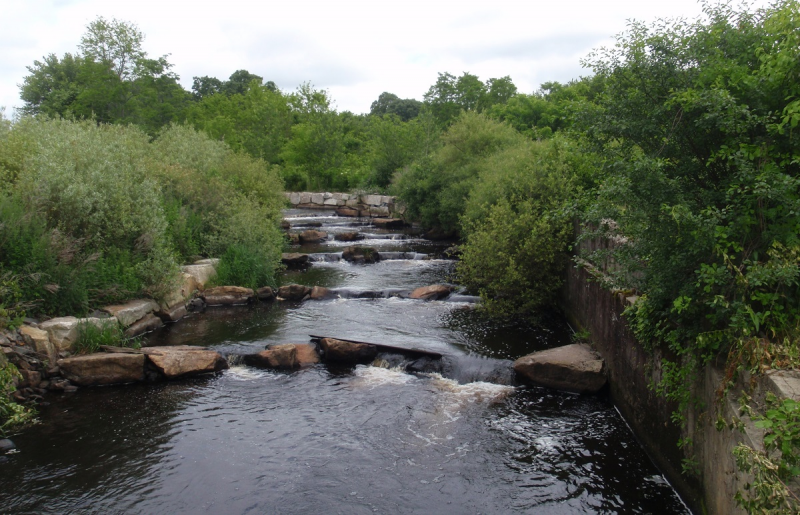
NOAA works at dozens of hazardous waste sites across the country using sound science to determine what the impacts of contaminants like PCBs have on the health of coastal ecosystems.
I personally have worked at the New Bedford Harbor Superfund Site in Massachusetts, which has the single largest amount of PCBs in the natural environment measured anywhere in the world. In healthy conditions, the Atlantic Ocean boasts an incredible diversity of bottom-dwelling creatures. Unfortunately, the PCB and other contamination at New Bedford Harbor has decimated this biodiversity.
In 1992, we reached settlement with the responsible parties for $20.4 million for natural resource damages. As of 2021, clean-up dredging has been completed, the New Bedford Harbor Trustee Council has implemented 37 restoration-related projects, with many more in the planning phase. However, there are many other PCB contaminated hazardous waste sites across the country.
This research has the potential to help scientists more accurately assess the impacts of PCBs and other contaminants at marine and freshwater hazardous waste sites. In turn, this helps NOAA and our partners hold polluters accountable and restore not only benthic environments, but ecosystems as a whole.
For More Information
Please see the two publications in the Journal of Environmental Toxicology and Chemistry
- Acute PCB Benthic Invertebrate Toxicity Testing to Support the 2017 Chronic Dose-Response Sediment Injury Model
- Benthic injury dose-response models for polychlorinated biphenyl-contaminated sediment using equilibrium partitioning.
The information in this blog reflects the views of the author, and does not necessarily reflect the official positions or policies of NOAA or the Department of Commerce.

